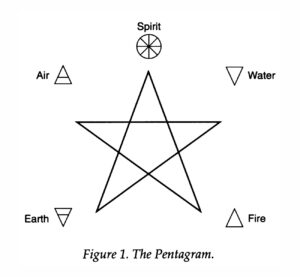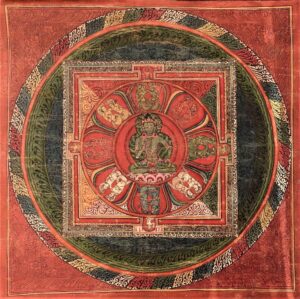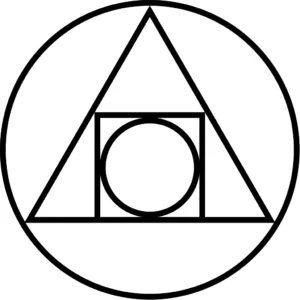Throughout history, symbols of knowledge, wisdom, and intelligence have been used to refer to book smarts and inner knowledge. In fact, the occult is founded on the idea of secret knowledge, meaning that quite a bit of information is hidden in these symbols of wisdom.
The term occult was derived from the Latin word occultus, which means secret, hidden, or concealed. As such, occult may refer to hidden or unknown knowledge.
Some of these images are symbols of intelligence, or knowledge that can be learned, while others are symbols of wisdom or secret knowledge.
The Owl

Since the beginning of written human documentation, the owl has been one of the most prolific symbols of wisdom. Lilith in Ancient Sumeria is depicted as an owl-humanoid feature, which was probably the inspiration for Athena and Minerva in Greek and Roman cultures respectively. Ancient Greeks believed that Athena shapeshifted into an owl to lead their armies to battle (should they be so fortunate), and that one should follow since Athena was the ultimate harbinger of knowledge.
Not only do owls represent physical book knowledge, but they are also symbols of wisdom that go far beyond what one can memorize. In various traditions, the owl represents wisdom, intuition, and a connection to the supernatural that imparts knowledge and truth.
Owls represent the wisdom of the Crone in the triple goddess (seen again and again in mythology) as the figure who has achieved all the knowledge accumulated during life, and they are thought to be guides in the underworld. They are also the manifestation of foresight due to their ability to see during the night when other creatures cannot (a metaphor for psychic clarity).
Yet some cultures also see owls as demonic symbols. For example, the Screech Owl is associated with many demons including Lilith, the mother of demons. More modern cultures, after the beginning of the Christian Church, began to see owls as bringers of death and omens. They also believed that owls were the familiars of witches. Most likely, this is because of the owl’s affinity for darkness, yet this same affinity also suggests knowledge of the self. After all, you can only discover yourself by turning to the darkest parts within and by making it back out.
While the owl is often associated with impending death, this can mean a metaphorical death as well. Many stories show that the symbol of the owl is a catalyst for change. Much like the Death and Tower tarot cards, the owl suggests that you must tear down old structures within to truly find yourself. That’s why the owl is also associated with Lilith, the Qliphoth (the root system of the Tree of Life), and with all things occult/hidden.
Ultimately, it seems that the power and the fear behind the owl lie in the mystery of this nighttime creature. So it’s up to you to decide what this mystery means. Is the idea of the owl something to fear, since we often fear the unknown, or is it a mystery that we must endeavor to solve within ourselves?
The Raven

The Serpent

One of the oldest and most prevalent mythological symbols is the serpent. The word derives from Latin serpens, which means crawling animal or snake. Snakes have been associated with ancient rituals and are a dual expression of good and evil.
The serpent or dragon is actually one of the keys to understanding how we fall prey to our subconscious mind and how we transcend to higher states of consciousness. However, through the serpent, we can find the wisdom to overcome our lower conscience self and discover our higher self, the truest expression of our soul, the power that lies within. Like a snake shedding its skin, we are reborn in our bodies.
Snakes are often associated with the underworld and represent the demonic side of our nature, which is formed in our subconscious minds and shaped by our experiences. Even so, these demonic influences provide us with the push we need to evolve and transcend. We must travel through the darkness rather than around it to find the light.
According to esoteric iconography and myth, the serpent may also represent our higher consciousness. In Hinduism and Buddhism for example, the Naga, a seven-headed serpent, is often depicted above the heads of the Devas. The Naga denotes enlightened beings such as Buddhas.
Ultimately, snakes are symbols of knowledge, but what you do what that knowledge is up to you. Snakes are neither dark nor light but are symbols of wisdom and the journey to find that inner knowing that is true power.
The Pentagram

Ouroboros

In this ancient symbol, which can be traced back as far as an Egyptian funeral text from the 14th century BC, the Ouroboros represents the continual return of magic and knowledge. It can certainly indicate that each generation learns from the next, but its also one of the most important symbols of wisdom because it indicates that the soul returns again and again, without losing the knowledge it has gained in previous lifetimes.
Triquetra
Arrow
The Ibis
In Ancient Egypt, the Ibis was a sacred bird associated with wisdom and learning. It was also the shape of God Thoth.
A Book

Since ancient times, books have been associated with knowledge, and not only because they literally impart information. There persists the idea of the hidden book, the means to enlightenment, which many religions insist are found in their own “book of knowledge.”
The Light Bulb

The light bulb is quite literally associated with light, which represents understanding, the mental lights being “turned on.”
There’s a scientific reason light bulbs are most associated with clever ideas. When the brain is active, chemical reactions produce electrical currents. The reactions occur in the brain’s nerve cells called neurons.
A neuron processes and transmits information through chemical and electrical signals that it passes from one to another at 420 km/h. Our brain lights up, much like a light bulb, once we process the information and have an insight.
Innovation is typically symbolized by the lightbulb because the brain “lights up” when it comes up with a new idea. A lightbulb is often associated with creativity and problem-solving. In other words, they represent a Eureka moment.
However, light bulbs are symbols of intelligence, too. Generally, light is associated with intelligence, wisdom, awareness, and the known. As the dark is dissipated by knowledge, the dark becomes light when a light bulb is switched on. The inner light symbolizes the ultimate form of enlightenment (which literally holds the letters for light within the word) and ultimate knowledge of the self, and therefore, the universe.
The Lotus Flower

The lotus flower is often used in Eastern spirituality and Buddhism to represent wisdom, enlightenment and rebirth. Lotus blossoms are said to represent a person’s journey to enlightenment, self-awareness, and ultimate knowledge.
As the flower rises from the mud, it symbolizes perseverance and adversity even under harsh conditions. Wisdom and enlightenment are the ultimate goals that transcend materialistic attachments and desires.
There are many different colors of lotus flowers, each with a different meaning. While all lotus flowers are technically symbols of knowledge, the white lotus flower is most especially associated with the ultimate knowledge of the self.
Mandala

While the Mandala has many meanings in Buddhist philosophy, one of the more common is knowledge.
Mandalas have many layers of meaning and significance. Fundamentally, they represent harmony, balance, and unity. At a deeper level, they display the connection between human souls and the universe.
If one looks at an example of a spider’s web, it becomes easier to understand the Mandala concept. Every strand in a spider web remains distinct and individual, but it is connected to the others and to the structure as a whole. A person has their own identity, but they are also connected to the world around them.
A Mandala represents the idea that self-understanding is only possible if there is a deep connection to the universe and vice versa. The Mandala is a common tool used by religious practitioners to reach this level of understanding, which ultimately leads to enlightenment. On every level, the Mandala is a symbol of knowledge and wisdom.
The Spider

There are many interpretations of spiders as symbols of knowledge. Both the dark and light aspects of its symbolism reflect its connection with life. In many cultures, spiders are credited with the ability to weave complex webs that are miracles of organic engineering. The spider, as a weaver of webs, is a symbol of creation and knowledge of All That Is.
Often, spiders are symbols of wisdom that are specifically feminine, representing the Great Mother, the feminine creator, and the one who is patient enough to weave the most intricate web.
Spiders are also symbols of knowledge of occultism and magic. As mysterious creatures, they indicate knowing that which comes from inside or from energy in the universe instead of from the more masculine traditions of books and outward knowledge.
The Philosopher’s Stone
The Philosopher’s Stone is a mythical stone believed to enable alchemists to transform any metal into gold. Nature’s four elements are illustrated by the symbol. As a metaphor, the Philosopher’s stone symbolizes a wise mind capable of transforming any given situation into something beautiful.
While the Philosopher’s Stone is clearly a symbol of eternal life, it can also symbolize the knowledge that we are already eternal. After all, the Philosopher’s Stone does not physically exist, yet the idea exists within us, implying that we already have this power.
The “Knot Of Wisdom”

The Nyansapo (also known as the Wisdom Knot) is one of the most sacred Adrinka symbols in Western Africa. Knowledge, humility, and ingenuity are among the traits it represents, as well as the idea that “a wise person can choose the best path to attain a goal.” The Wisdom Knot is of particular significance to the Akan people of Ghana because they believe it empowers them with wisdom in decision-making.
Keys

A key is a simple object, but it also symbolizes knowledge and success across the world. Physical, mental, or spiritual keys can open doors to new opportunities. Janus, the two-faced God of Gates, could look into the past and the future according to Roman mythology. In mythology, he is typically depicted holding a key in his left hand and is said to grant success and opportunities through imparting wisdom.
Ganesh, the great Hindu god who is often associated with keys, has the ability to move obstacles in order to open up new knowledge or paths. Ganesh is invoked for wisdom and knowledge.
Since keys are used to unlock things, they represent the opening up of previously closed or out-of-reach places and achievements. Keys are the tool that can open up a world of knowledge.
As symbols of wisdom, keys are used by secret societies for a reason. Without the key, you are unable to gain the exclusive knowledge of the society, but once imparted the knowledge can never be taken away. Even nowadays, fraternities, sororities, and other secret groups incorporate symbols of wisdom through keys.
When you hold a key in your hand – especially a skeleton or a master key – you are free to do whatever you want and go anywhere you want. But this also means that keys are knowledge symbols because they offer the freedom to learn and to unlock the wisdom that already exists in one’s subconscious mind.
Elephants

On the physical level, elephants are symbols of knowledge because they have the largest brains of any land animal.
Wolves

In Native American culture, wolves are a symbol of inner knowledge rather than book smarts.
Many tribes in North America consider wolves to be teachers. In addition, they are strongly associated with death and rebirth because they guide the dead to the afterlife. Since they travel up mountains in order to escape people, these intelligent and social creatures came to be associated with the higher spirits.
According to the Lakota language of the Sioux tribes, wolves are symbols of divinity. Dreams of wolves or seeing wolves as your spirit guides are often messages to trust your instincts and listen to your inner guidance.
The Bodhi Tree

The Bodhi tree (a sacred fig tree in Bodhgaya) is an important symbol in Buddhism since it is under this tree that Buddha attained enlightenment. In Sanskrit and Pali, the word “Bodhi” means “awakening.” It is called the “Tree of Enlightenment” or the “Wisdom Tree” by Buddhists.
Since it symbolizes enlightenment and the joy and peace of Nirvana, the Bodhi tree remains in Buddhism a powerful symbol. Buddhists believe they will be enlightened as the Bodhi Tree grows because the leaves of the tree look like hearts.



